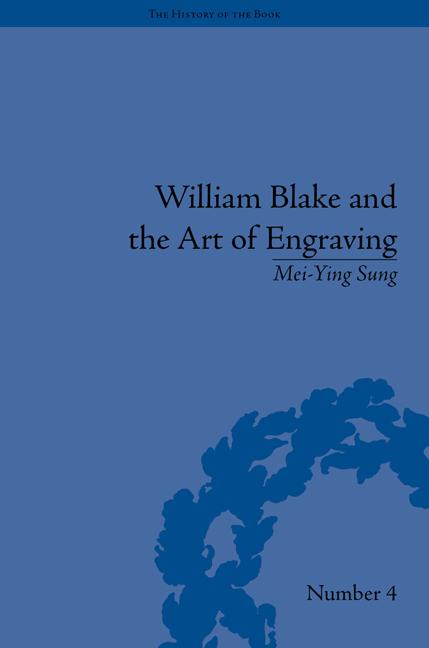Book contents
- Frontmatter
- CONTENTS
- Abbreviation
- List of Figures
- Acknowledgements
- Introduction
- 1 The History of the Theory of Conception and Execution
- 2 The Evidence of Copper Plates
- 3 Blake's Engraved Copper Plates
- 4 Copper Plate Makers in Blake's Time
- 5 Blake's Virgil Woodcuts and the Earliest Re-Engravers
- Conclusion
- Notes
- Works Cited
- Index
Introduction
- Frontmatter
- CONTENTS
- Abbreviation
- List of Figures
- Acknowledgements
- Introduction
- 1 The History of the Theory of Conception and Execution
- 2 The Evidence of Copper Plates
- 3 Blake's Engraved Copper Plates
- 4 Copper Plate Makers in Blake's Time
- 5 Blake's Virgil Woodcuts and the Earliest Re-Engravers
- Conclusion
- Notes
- Works Cited
- Index
Summary
This introductory chapter is intended to announce the scope of this project and to give an indication of the range of issues it will discuss. The principal elements of my argument concern the current debate surrounding William Blake's techniques of relief etching and engraving and their context in the survival of the important, yet neglected, archives of his original copper plates in major museums and art galleries.
One of the reasons for the neglect of Blake's copper plates is that nearly all modern scholars interested in Blake's printing techniques have focused on his relief etching while ignoring his engraving. This is due to a relative devaluation of the technique of engraving which is often regarded as an obsolete means of reproduction and which was replaced by other techniques during the nineteenth century. Paradoxically, modern Blake scholarship on engraving has reproduced the very arguments about its low aesthetic valuation which Blake's Public Address (1810) did so much to refute. With their concentration on etching rather than engraving, notable scholars such as Robert N. Essick, Michael Phillips and Joseph Viscomi may have worked with a contrary emphasis to much of what Blake had to say in the Public Address, his most elaborated discussion of the role of engraving amongst the fine arts.
Although there have been well-defined competing interpretative theories about the literary aspects of Blake's works (e.g. David Erdman versus Northrop Frye, historicism versus proto-structuralism), nothing has generated so much controversy as academic discussion about Blake's artistic processes. The chief aspects of the arguments have gathered around the production of the illuminated books, particularly those produced between 1789 and 1795, and Blake's use of relief etching and colour printing. Nowhere are these encounters between competing views of techniques made more apparent than in the catalogue and content of the Tate Britain Blake exhibition held in the year 2000, co-curated by Michael Phillips and Robin Hamlyn, and made accessible by its associated catalogue, William Blake (2000). Some of the more controversial suggestions included in the exhibition concerning Blake's methods of colour printing were further elaborated in Phillips's book, William Blake: The Creation of the Songs from Manuscript to Illuminated Printing (2000).
- Type
- Chapter
- Information
- William Blake and the Art of Engraving , pp. 1 - 18Publisher: Pickering & ChattoFirst published in: 2014



